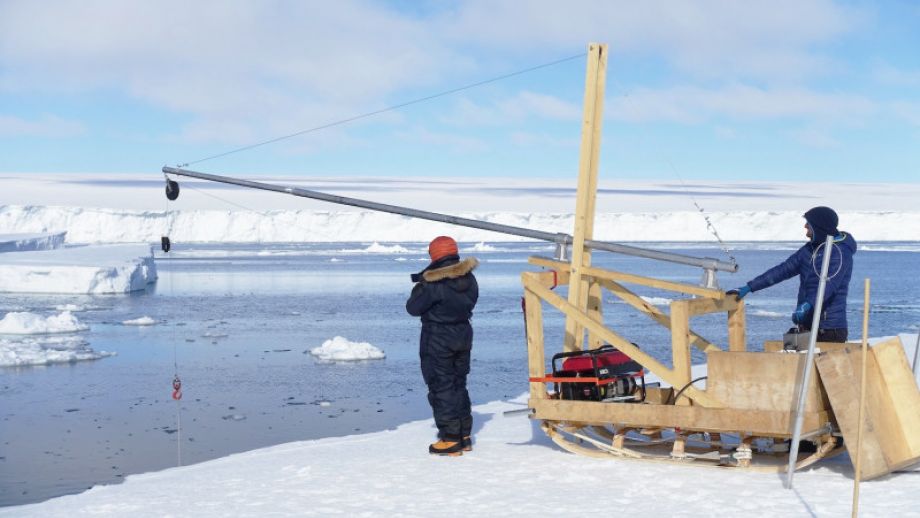RECTO Project Sets Stage for Future Biological Research along Princess Ragnhild Coast

The 2021-22 season witnessed a groundbreaking research project based out of the Princess Elisabeth Antarctica that will pave the way for future marine biological research in the region.
Funded by the Belgian Science Policy Office (BELSPO), the RECTO project (Refugia and Ecosystem Tolerance the the Southern Ocean), aims to advance our understanding of the responses of Antarctic marine ecosystems to the strong environmental pressures they face. Even though the fieldwork of the RECTO project has mainly focused on the Antarctic Peninsula, the maritime area located in the area of the Princess Regnhild Coast in East Antartica close to the Princess Elisabeth Antarctica station is relatively unexplored from the point of view of its marine biodiversity.
It is in this area that the International Polar Foundation led an important expedition to allow Prof. Bruno Danis, who heads the Marine Biology Lab at the Université Libre de Bruxelles (ULB) to carry out preliminary work in the region of Breid Bay and Camp Derwael, nearly two hundred kilometres from PEA on the Princess Ragnhild Coast in East Antarctica.
The purpose of this preliminary work was to:
- Carry out an initial inventory of biodiversity using light harvesting gear (baited traps and a lander with underwater filming systems)
- Identify the characteristics of the terrain, and to assess the challenges to be overcome in carrying out research on marine biodiversity
- Carry out a series of oceanographic measurements to characterize the region.
After several days of preparations and development of the equipment, including the design and assmbley of the sampling lander, a team made up of expedition leader Alain Hubert, Bruno Danis, Timothée Grosrenaud, and Thomas Naulin set off for the coast aboard a caravan made up of three large sledges, respectively serving as a living space, work space, and storage space, all towed by a Prinoth tractor.
After a day of driving, the team established a first base camp at Breid Bay, from which it was possible for them to do short reconnaissance missions on snowmobiles to find a launch site suitable for using the harvesting machinery that we had constructed. This allowed us to identify the best access points from which we could deploy our instruments from the ice shelf’s frozen cliffs.
While the launch of the lander and the traps went smoothly, an unexpected difficulty arose: the the underwater lighting and shooting equipment turned out to be less than reliable. After recovering the lander following a dive to 206 metres, the entire lighting system was irreparably damaged due to issues with the sealing around the lamps and the batteries. Despite these problems, we managed to take more than 1500 high-resolution photos, which will provide valuable insights for future work.
After staying longer in the water, we recovered the traps with their contents, thanks to Alain Hubert’s sustained effort. In the end we managed to sample several dozen organisms. We’re going bring these samples to the biology lab at the ULB for detailed analysis (taxonomical identification and genetic sequencing).
We then moved our base camp to Camp Derwael. The team did another test with the lander, in a new configuration. Unfortunately, the underwater lighting equipment again suffered from a lack of adequate waterproofing. The team recovered the traps after they spent around thirty hours at the bottom of the ocean, which enabled us to recover around fifty smaller organisms who will also be shipped to Belgium.
In addition to our biological sampling, we launched CTDs (sensors recording depth, temperature and salinity), which allowed us to collect data that are not often collected in this part of Antarctica. These data will make it possible characterize the profiles of the water masses along the Princess Ragnhild Coast. We finished the day by deploying a CTD in a deep zone (784 metres) so we could profile water masses, which revealed unexpected results!
After eight days in the field, we returned to the Princess Elisabeth Antarctica with a few stops along the way. Despite the technical difficulties we encountered, the expedition produced a series of data, allowed us to collect specimens, and gave us the opportunity to get valuable field experience, which will shape future marine biological research in an area that has been identified as having a particular ecological value for large marine predators (birds and mammals), but which is a heavily under-researched area.
Download





















